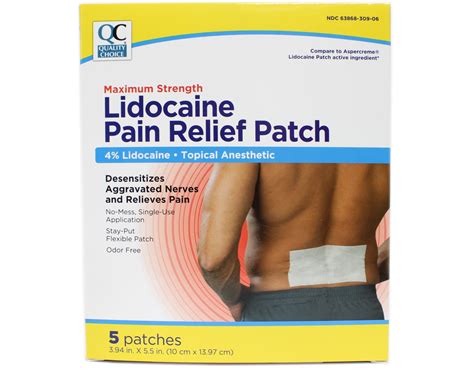The desire for a flat, toned stomach is a common goal for many individuals, particularly after significant weight loss, pregnancy, or as part of a broader effort to improve overall physical fitness and appearance. For those who have tried various diets and exercise regimens without achieving the desired outcomes, abdominoplasty, commonly known as a tummy tuck, presents a surgical solution to flatten and firm the abdomen. This procedure, performed by a plastic surgeon, involves removing excess skin and fat from the abdomen and tightening the muscles of the abdominal wall, providing a more defined and smoother appearance.
Understanding the Procedure
Abdominoplasty is a major surgical procedure that requires careful consideration and consultation with a qualified healthcare professional. The process begins with an initial consultation, where the surgeon evaluates the patient’s overall health, discusses their expectations, and determines the most appropriate technique. There are several types of abdominoplasty, including the full tummy tuck, mini tummy tuck, extended tummy tuck, and circumferential tummy tuck, each designed to address different needs and body types.
The full tummy tuck, the most common form, involves a horizontal incision in the lower abdomen, just above the pubic area, and sometimes a second incision around the navel to reposition it after the skin has been tightened. The mini tummy tuck is less invasive and involves a shorter incision, primarily targeting the area below the navel, making it suitable for those with less excess skin. The extended tummy tuck extends the incision to address the flanks or hips, and the circumferential tummy tuck, often referred to as a body lift, combinesthe tummy tuck with a buttock lift for more extensive body contouring.
Preparing for Abdominoplasty
Preparing for abdominoplasty involves several steps to ensure the best possible outcomes and minimize risks. Patients are advised to maintain a stable weight, as significant weight fluctuations after surgery can affect the results. Quitting smoking and avoiding certain medications that can increase bleeding or interfere with healing are also recommended.
A thorough medical evaluation is necessary to identify any potential health risks. This includes discussing previous surgeries, allergies, and any medical conditions that could impact the procedure or recovery. Patients should also prepare their home for recovery, ensuring they have all necessary supplies and support for the post-operative period.
Recovery and Post-Operative Care
The recovery period from abdominoplasty can vary, but most patients require several weeks to fully recover. Immediately after surgery, patients can expect some degree of pain, swelling, and bruising, which can be managed with medication and by following the surgeon’s post-operative instructions. Wearing a compression garment as directed can help reduce swelling and support the new contours of the abdomen.
It’s crucial to avoid strenuous activities, heavy lifting, and bending during the initial recovery phase. Follow-up appointments with the surgeon are essential to monitor the healing process, remove sutures, and address any concerns or complications that may arise.
Benefits and Risks
Abdominoplasty offers several benefits for the right candidates, including improved abdominal contour, enhanced self-confidence, and, in some cases, relief from back pain and improved posture due to tightened abdominal muscles. However, like any surgical procedure, abdominoplasty carries risks and potential complications, such as infection, bleeding, scarring, and adverse reactions to anesthesia.
Choosing a board-certified plastic surgeon with extensive experience in performing abdominoplasty is crucial for minimizing risks and achieving the best possible outcome. It’s also important for patients to have realistic expectations and understand that while abdominoplasty can significantly improve the appearance of the abdomen, it may not result in a “perfect” figure, and future weight gain or pregnancy can impact the long-term results.
Cost Considerations
The cost of abdominoplasty varies widely based on factors such as the surgeon’s fees, the location where the surgery is performed, the extent of the procedure, and the need for additional surgical techniques, such as liposuction. Insurance coverage is typically not available for cosmetic procedures like abdominoplasty unless it is performed to correct a medical condition, such as a hernia.
Patients should discuss financial aspects with their surgeon during the initial consultation to understand all the costs involved and explore available financing options. It’s also important to prioritize the surgeon’s qualifications and experience over the cost, as choosing a less qualified surgeon to save money can lead to disappointing results or increased risk of complications.
Conclusion
Abdominoplasty is a powerful tool for transforming the abdomen, offering a solution for individuals looking to restore a firmer, smoother appearance after life events that have altered their body. While it is a significant procedure requiring careful consideration and preparation, the benefits can be profound, leading to enhanced physical and psychological well-being for those who undergo it. As with any surgical procedure, a thorough understanding of the process, potential outcomes, and risks, combined with the expertise of a qualified plastic surgeon, is essential for achieving the best possible results.
What is the typical recovery time for abdominoplasty?
+The typical recovery time for abdominoplasty can range from several weeks to a few months, depending on the extent of the procedure and the individual’s overall health. Most patients can return to light activities within two weeks and resume more strenuous activities after about six to eight weeks.
Can abdominoplasty be combined with other surgical procedures?
+Yes, abdominoplasty can often be combined with other surgical procedures, such as breast surgery, liposuction, or facial rejuvenation, as part of a comprehensive body contouring or mommy makeover plan. Combining procedures can be beneficial in terms of overall recovery time and cost but should be discussed thoroughly with a qualified surgeon to ensure safety and optimal outcomes.
How long do the results of abdominoplasty last?
+The results of abdominoplasty can last for many years if a healthy lifestyle is maintained. Significant weight gain, pregnancy, or aging can, however, impact the long-term results, potentially leading to some return of the pre-surgical appearance. Regular exercise, a balanced diet, and follow-up care with a healthcare provider can help in maintaining the best possible outcomes.



